The shift from print to digital demands a rethinking of the library both as an institution and a building typology. To sustain their relevance in the information age, modern libraries must not only provide the spatial programming of traditional library buildings, but also generate alternative spaces and uses to attract new audiences. The featured projects depart from the conventional idea of the library turning traditional spaces into modern cultural hubs.
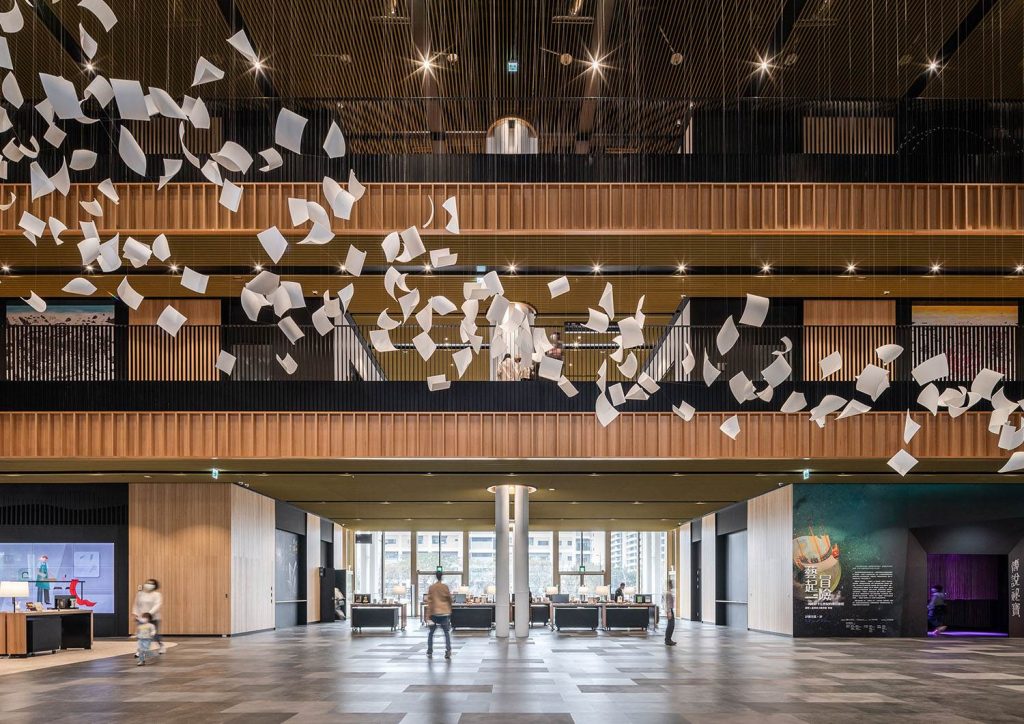
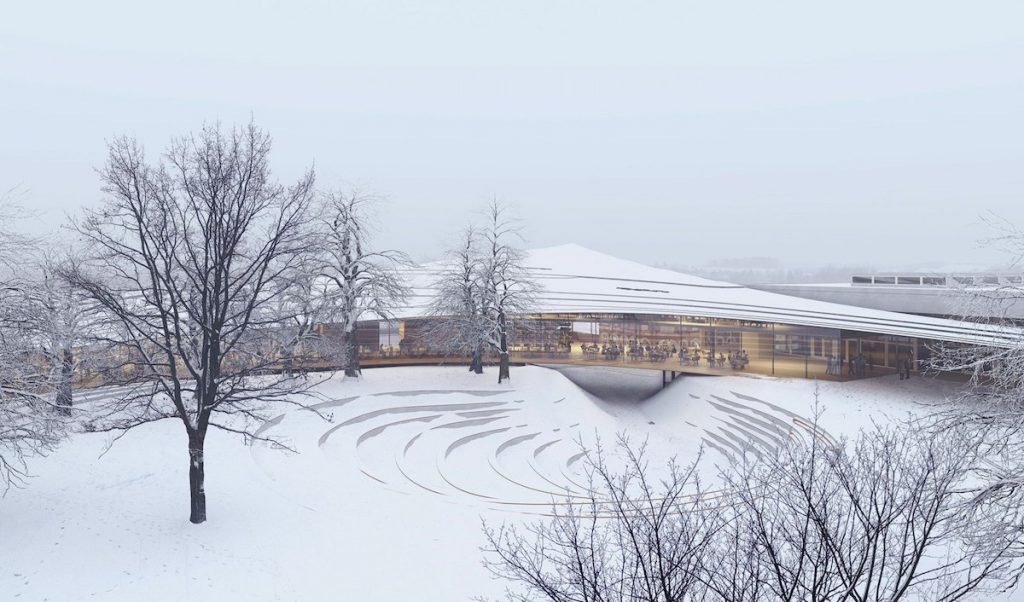
Ibsen Library by Kengo Kuma and Associates and Mad Arkitekter
Kengo Kuma and Associates has teamed up with Oslo-based Mad Arkitekter on the design proposal that has won a recent competition for a library in a small urban park in Skien, Norway. Named Ibsen Library, the elegant curvilinear building that blends into the existing landscape will become a cultural center for both tourists and local community to exhibit the literature of Henrik Ibsen – a 19th-century playwright, often named “father of modern drama,” who was born in the Norwegian city. The design is intended to preserve its parkland setting while maximising its potential as a public space.
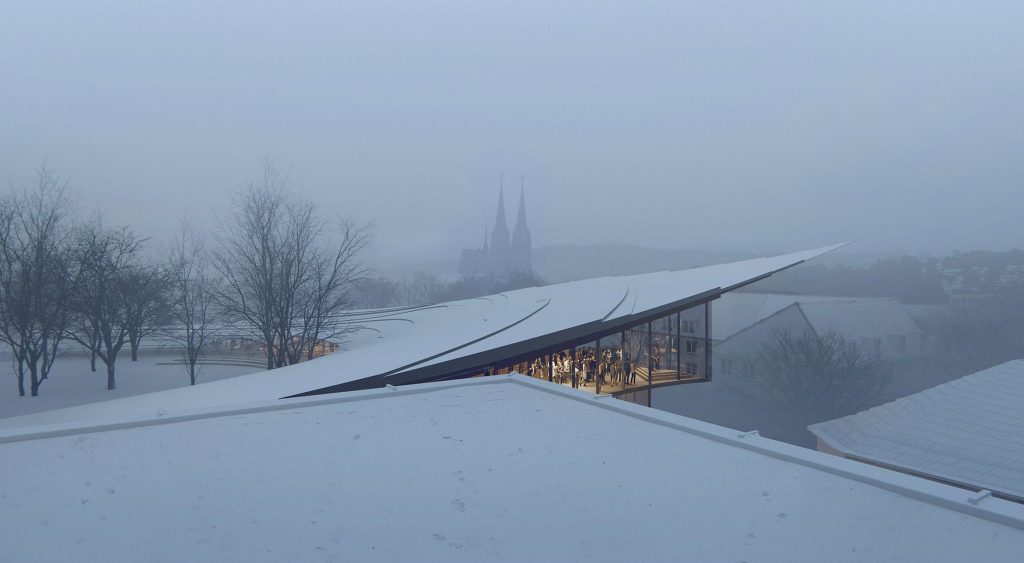
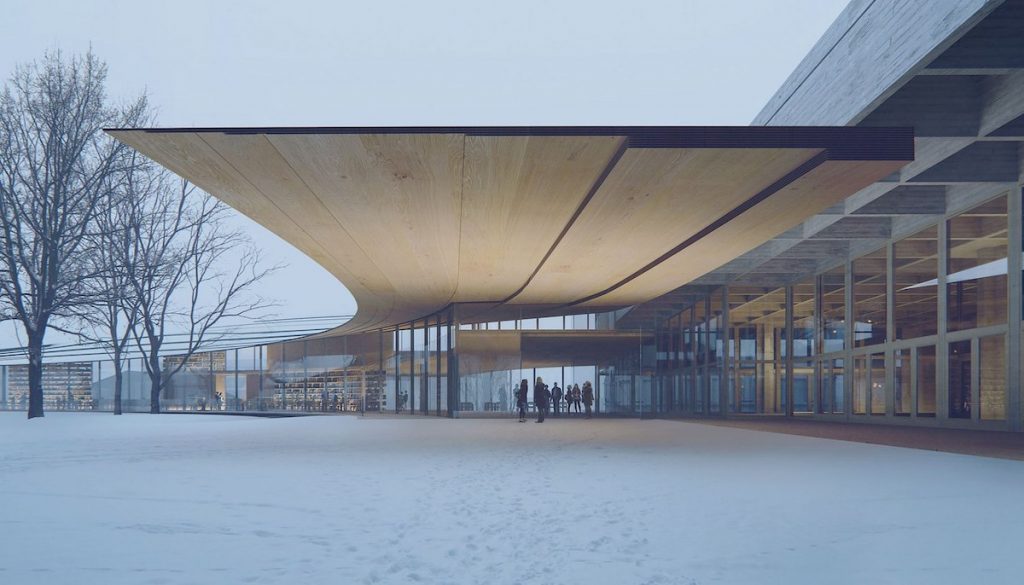
Ibsen Library by Kengo Kuma and Associates and Mad Arkitekter
The building’s curved form will be formed around the existing trees, while a new outdoor amphitheatre and multiple access points along the building’s transparent façade will help to connect the building with the park. The library does not feel like a conventional building with a single grand entrance, but rather like one connected object that can be experienced along multiple paths that vary between interior and exterior space. This feeling is enhanced through use of large areas of glazing introduced along one edge of the building.
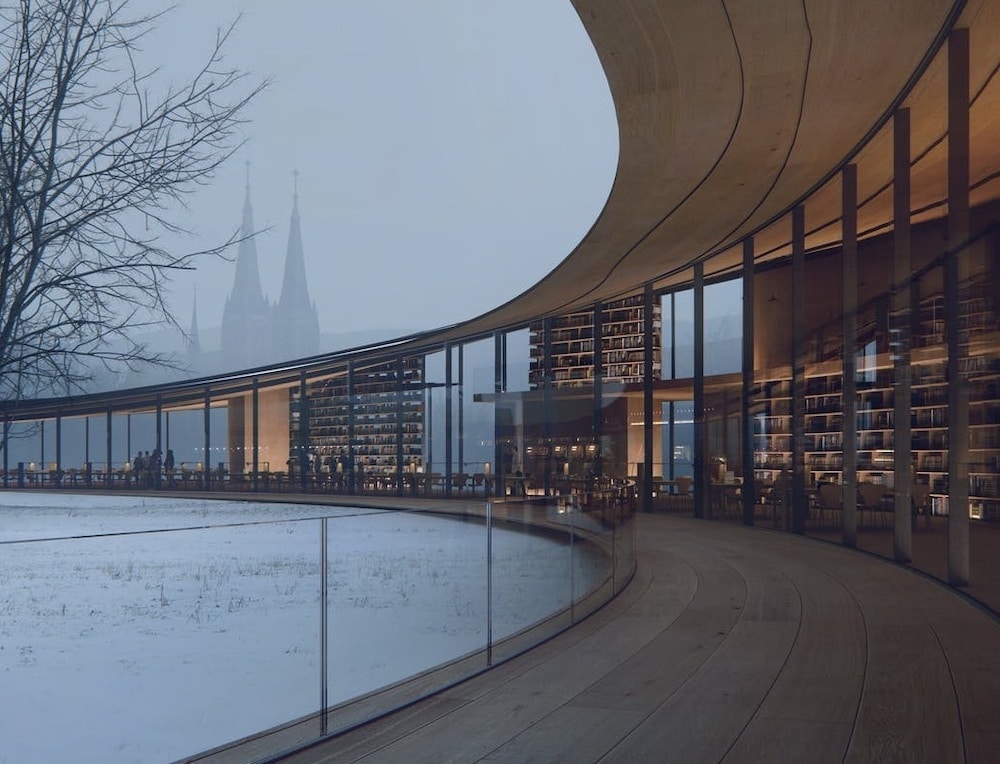
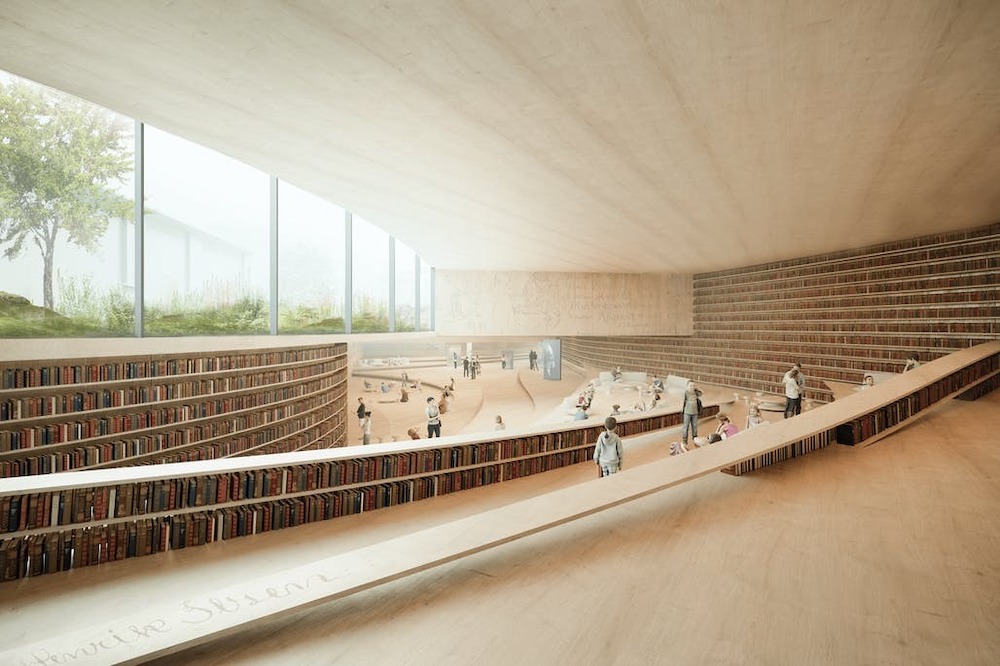
Ibsen Library by Kengo Kuma and Associates and Mad Arkitekter
Externally, one of the most notable features of the structure is its softly curving roof covered in wood shingles, which lowers towards the park, echoing the shapes and scale of the leaves on the surrounding trees.
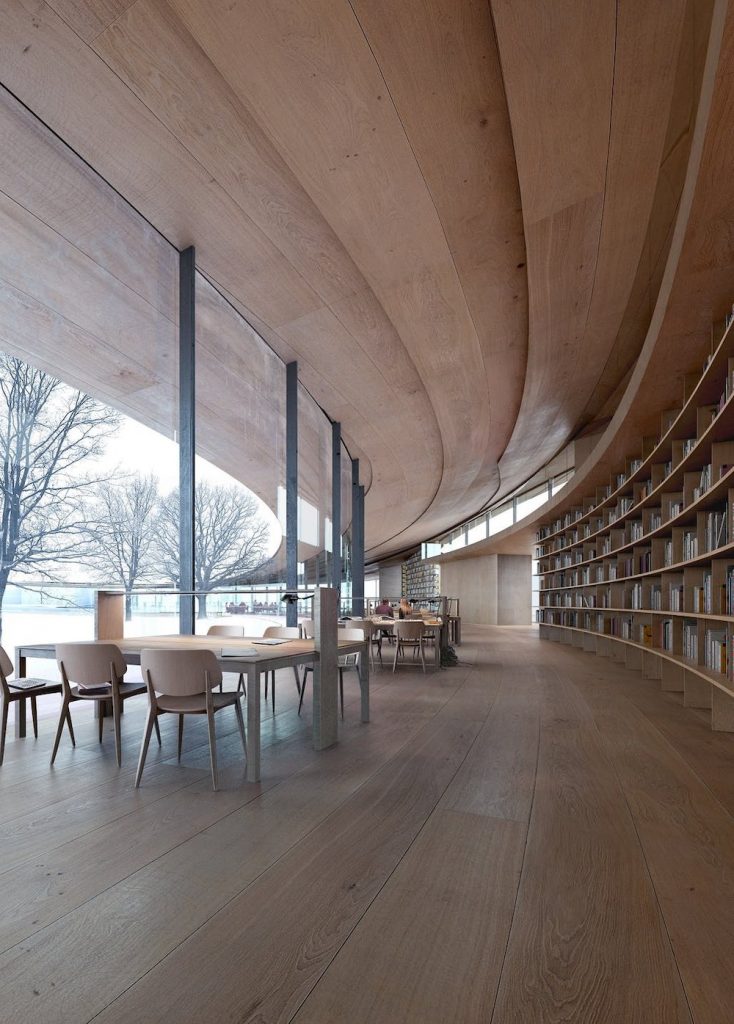
Ibsen Library by Kengo Kuma and Associates and Mad Arkitekter
Set to be built on a sloping site, the library will have two storeys above ground and two embedded in the hillside. The majority of spaces are expected to be open in plan and free of fixed partitions, with bookcases used as dividers instead. The ground floor will house a cafe and children’s area dominated by tactile, warm woods that maximizes their connection to the park. A notable feature of the submerged level will be its sloping floor, lined with a series of wide steps with bookshelves that will double as seating for visitors.
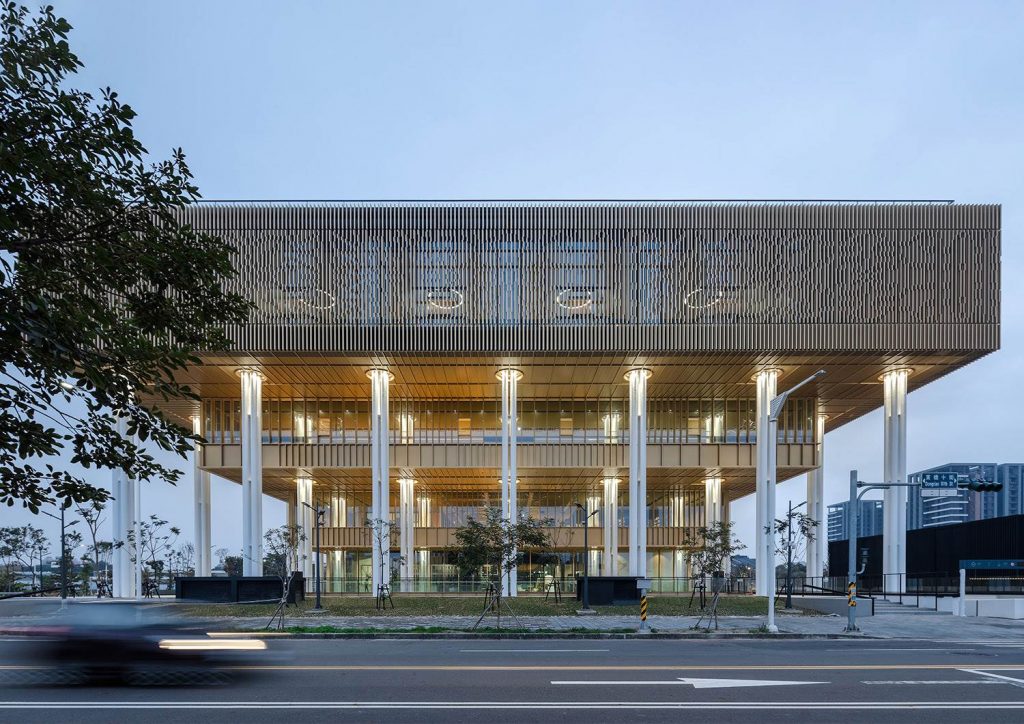
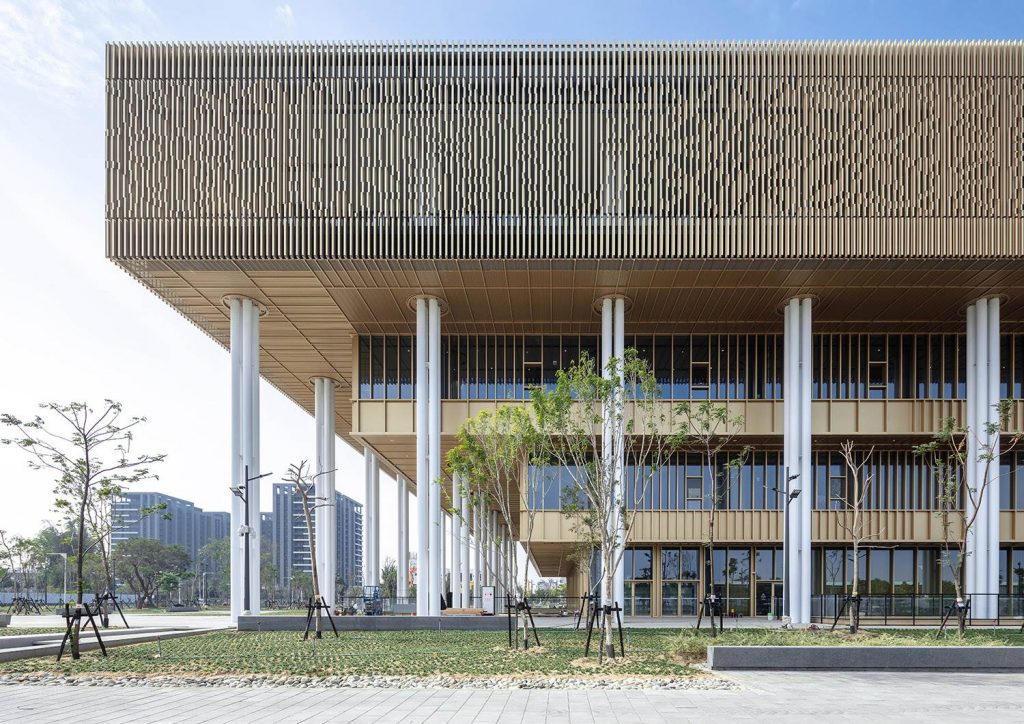
Tainan Public Library by Mecanoo (also header image)
The most striking feature of Tainan Public Library designed by Delft-based multidisciplinary studio Mecanoo in collaboration with MAYU’s design is its inverted stepped shape, recognizable from afar. Slender columns support the cantilevers in rhythmically placed quartets, giving a feeling of weaving your way through a modern bamboo forest. The striking crown of the building is surrounded by vertical aluminium slats with carved flower patterns, reminiscent of the decorative latticed windows in the old town, which filter the light and keep the heat out.
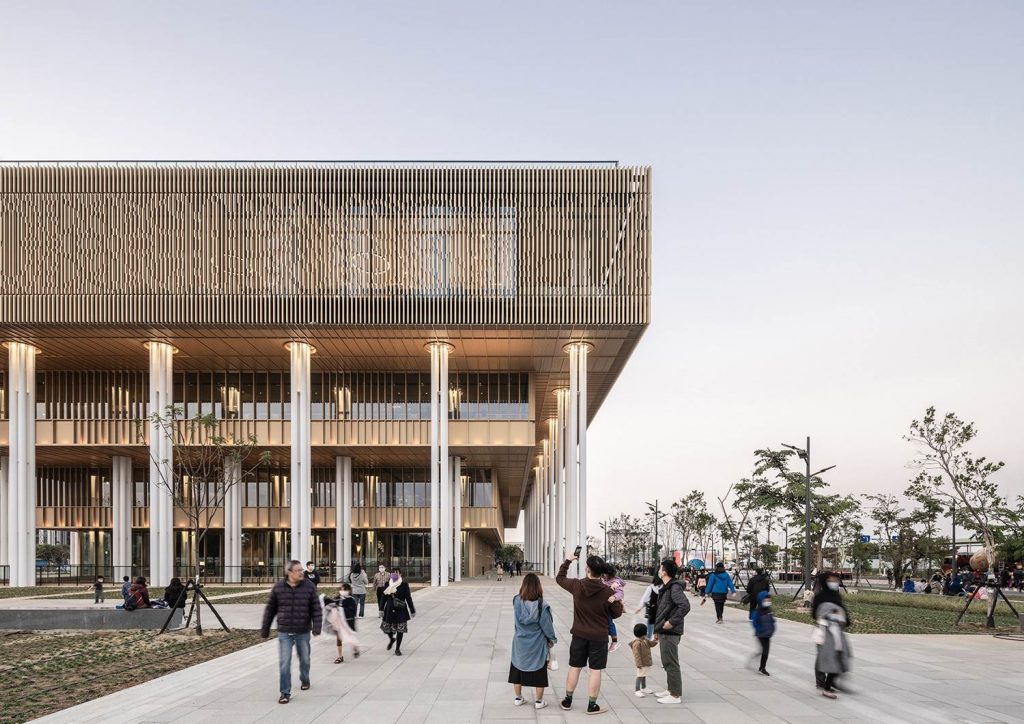
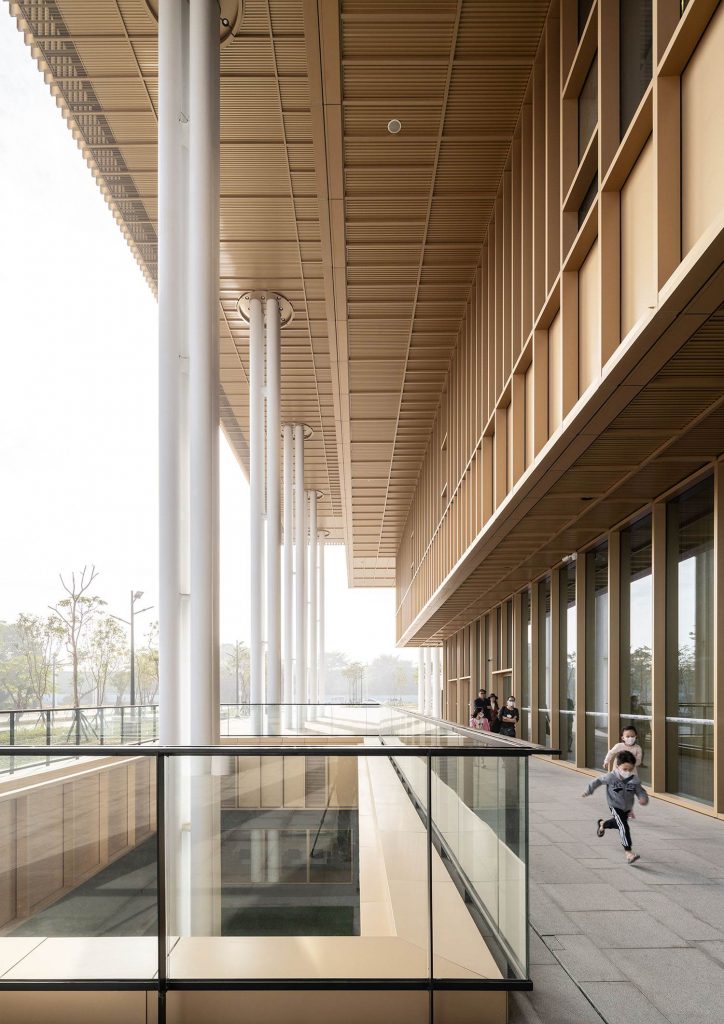
Tainan Public Library by Mecanoo
Creating a smooth transition from exterior and interior, four sunken patios for outdoor activities, such as lectures, concerts and exhibitions, are situated below the cantilevers, with the largest accessible from the square.
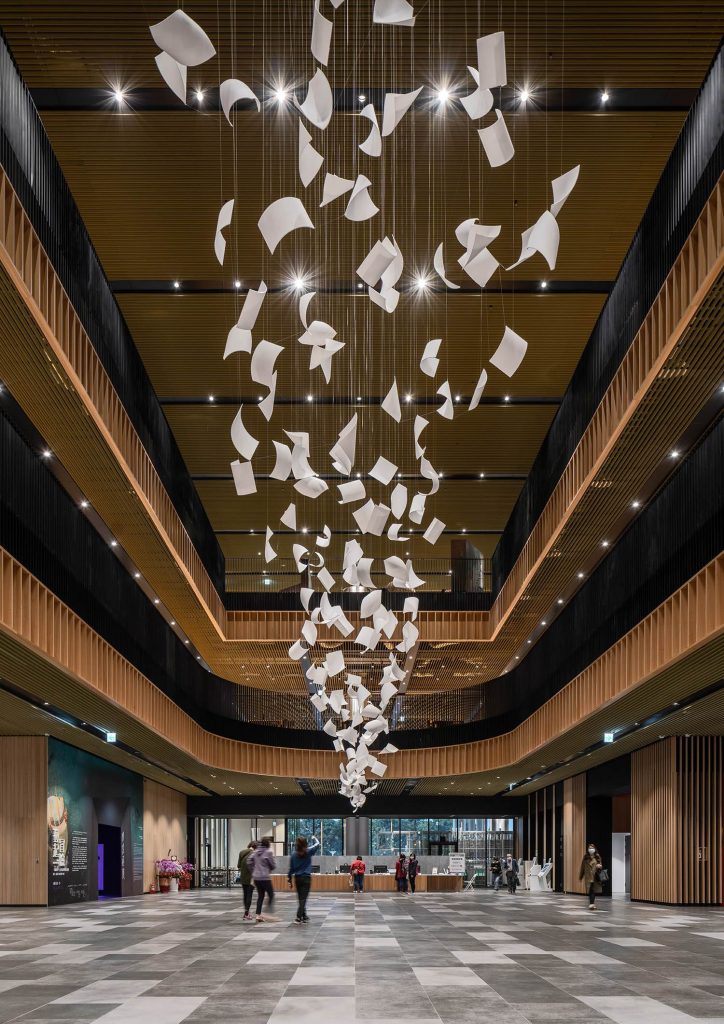
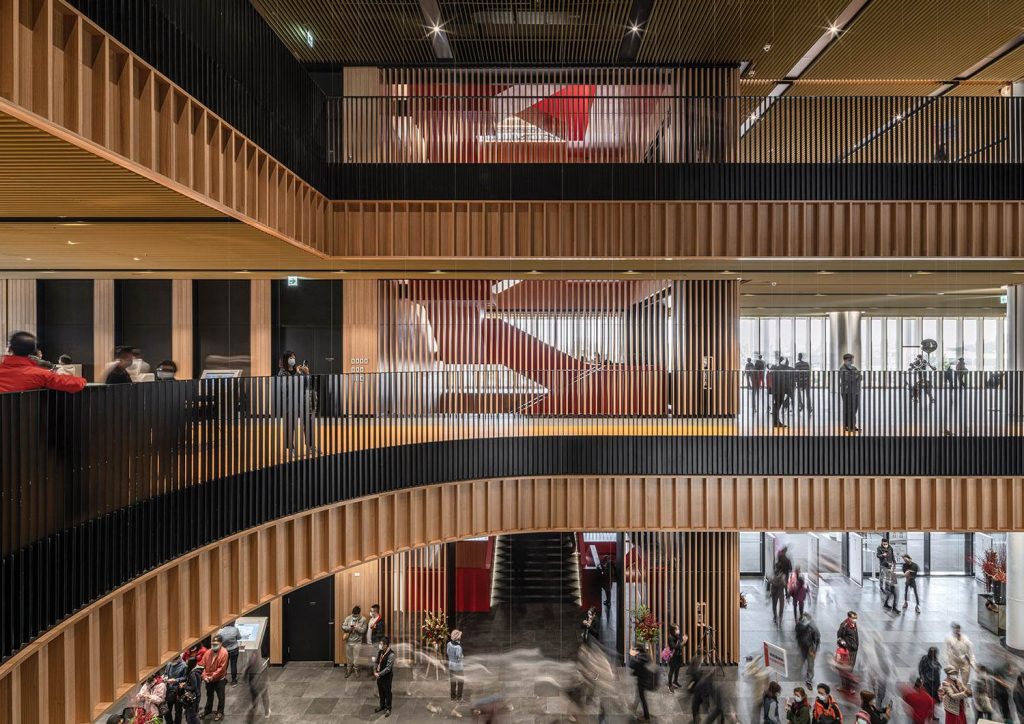
Tainan Public Library by Mecanoo
The design of the library allows maximum flexibility, so that the building is prepared for future changes. The double-height atrium of the library is spacious, transparent and warm due to the wood finish. The lower level accommodates children’s library with an adjoining patio as well as a spacious study with its own entrance. Above, there is a media library along with a library for teenagers with its own lounge.
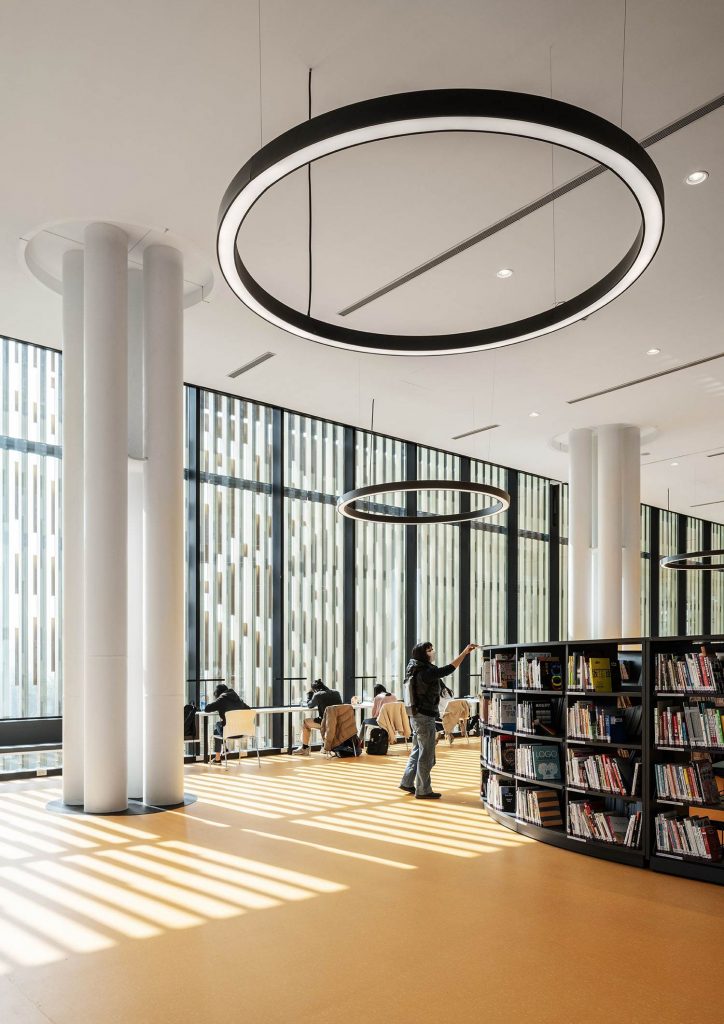
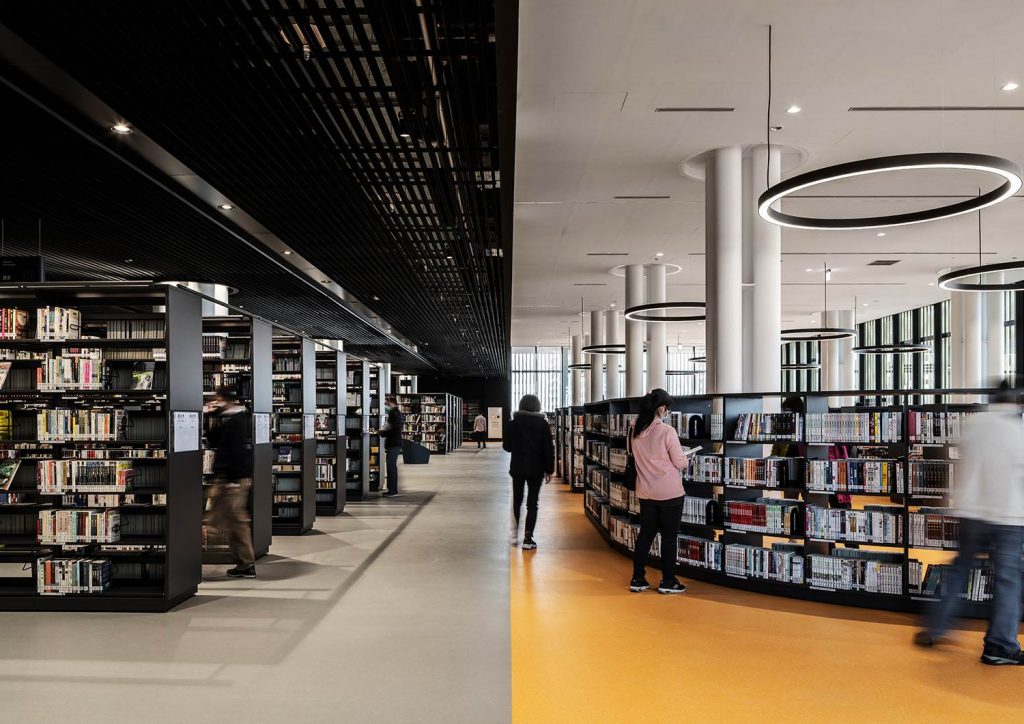
Tainan Public Library by Mecanoo
The general collection is located on the upper level. Beyond, there is a floor dedicated to the heritage collection including the Tainan Memorial Exhibition, Japanese Collection Archive and books by Taiwanese authors. Connecting all levels is a red sculptural staircase, which adds an exciting element to the geometric building.
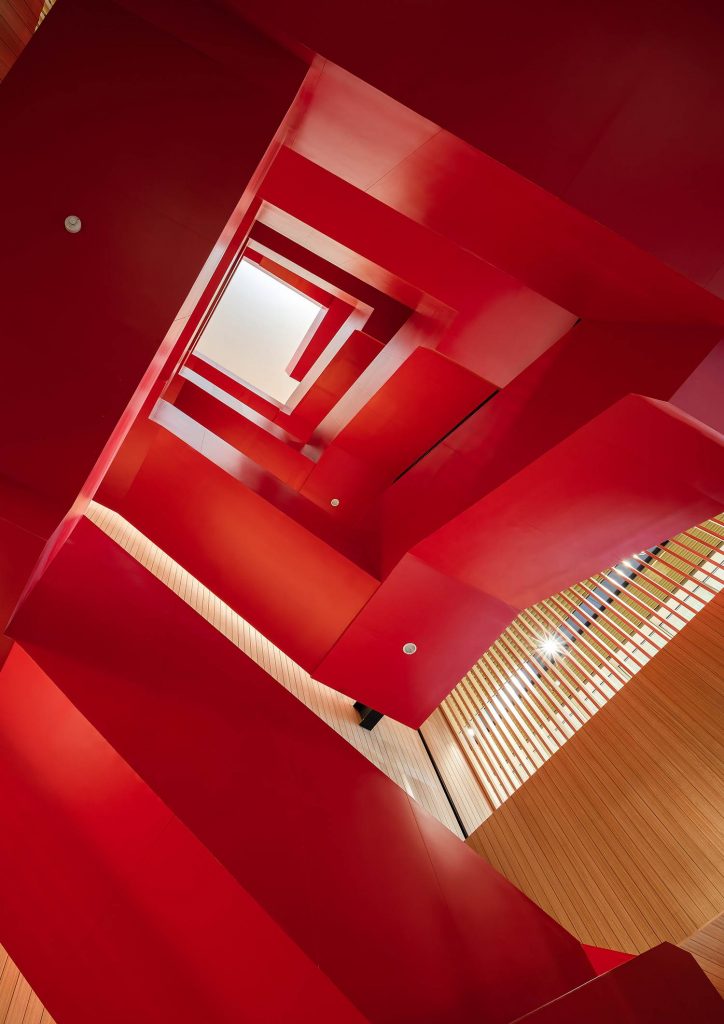
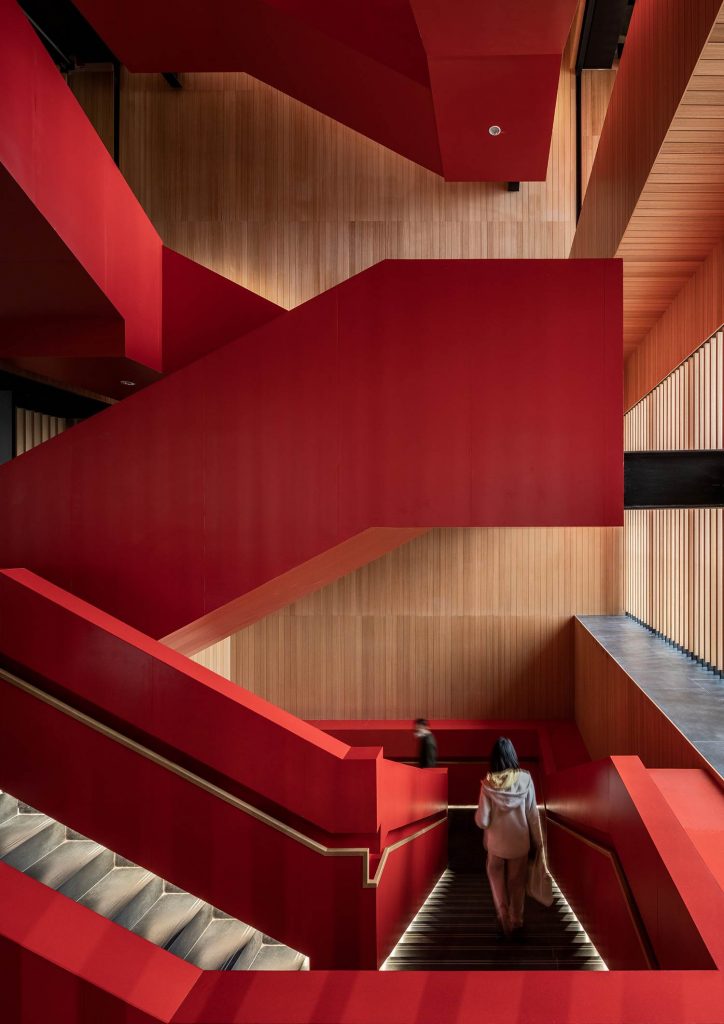
Tainan Public Library by Mecanoo
At the top of the building, one will find the theatre and conference hall. Furthermore, the building has an art gallery, a maker space and Braille library.
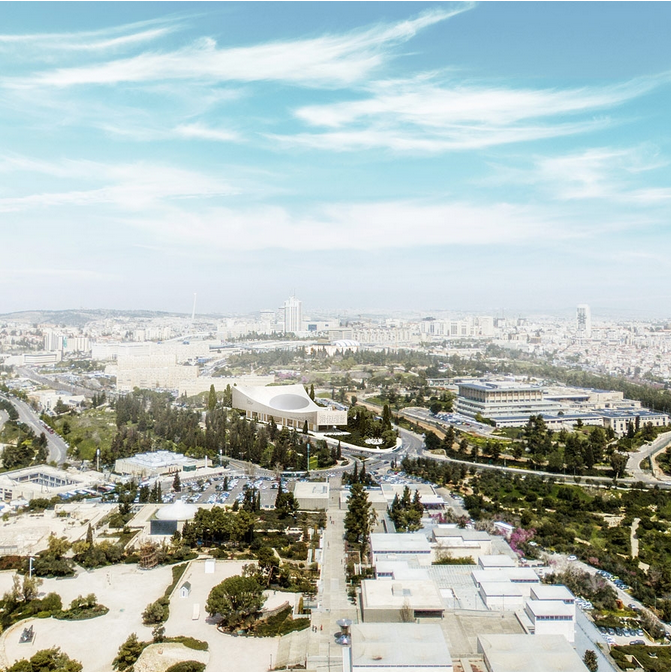
National Library of Israel by Herzog & de Meuron
Located on a sloping triangular site in Jerusalem, adjacent to the Israel Museum, National Library of Israel is designed by Herzog & de Meuron, an architecture practice established in Basel, Switzerland, to be a link between the cultural and civic buildings around it and an extension of the park-like landscape that weaves through the area. A native garden with public space and art will surround the Library and connect the interior functions to the surroundings.
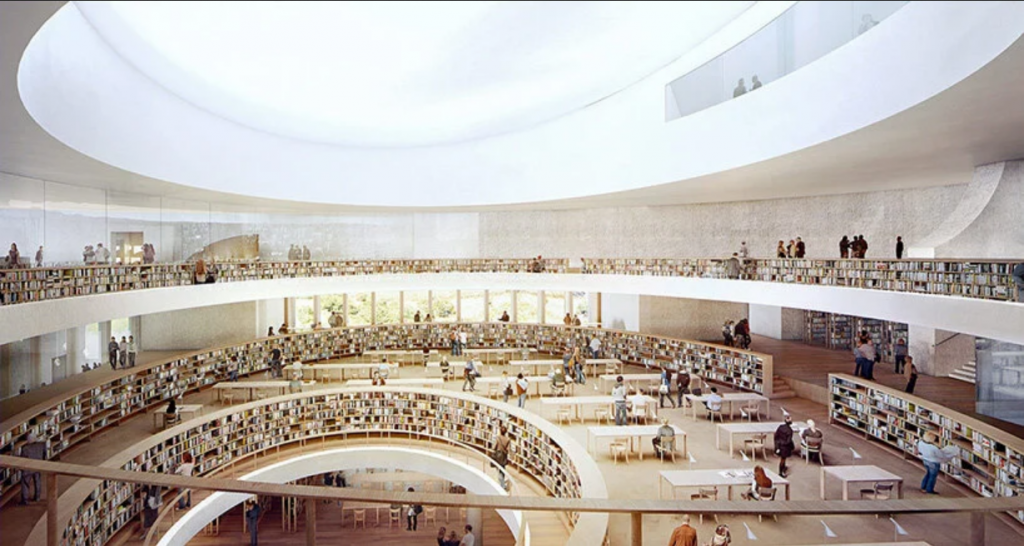
National Library of Israel by Herzog & de Meuron
When inside the library, the readers find themselves surrounded by books. The focal point of the interior is a reading room surrounded by exhibition spaces, an auditorium, a bookstore, a youth center, and places to eat and drink. Books root the building to the ground and are visible to all in a central book-lined void, which passes through all levels of the library connecting the reading-room, public spaces, and administrative areas to the collection below. The void, described by the architects as “book well,” consists of offset circles and culminates in a large circular skylight.
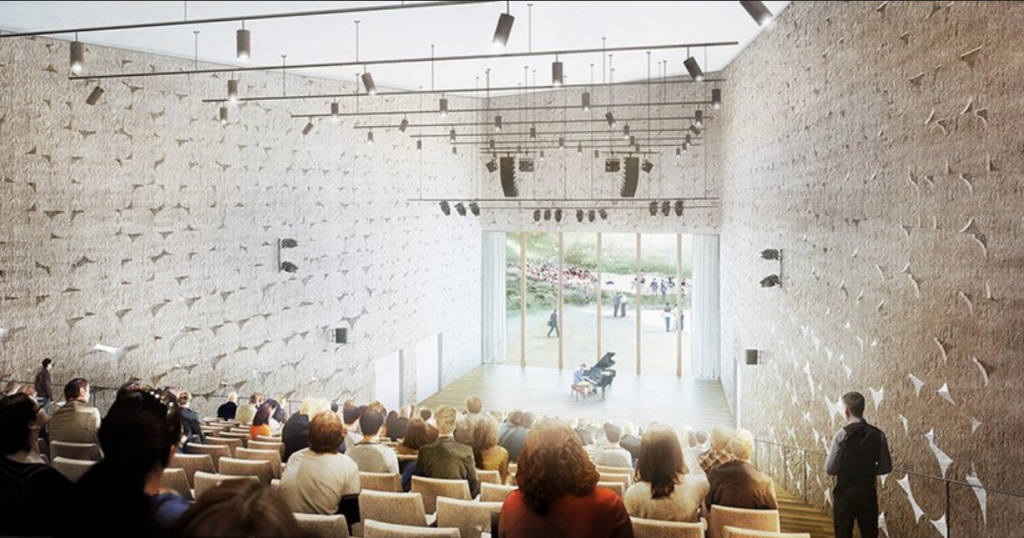
National Library of Israel by Herzog & de Meuron
Five rectangular vitrine-like elements form the two lower floors of the building and display the library’s content and activities to the street. The vitrine to the south contains the auditorium and restaurant while opening to the public plaza outside.
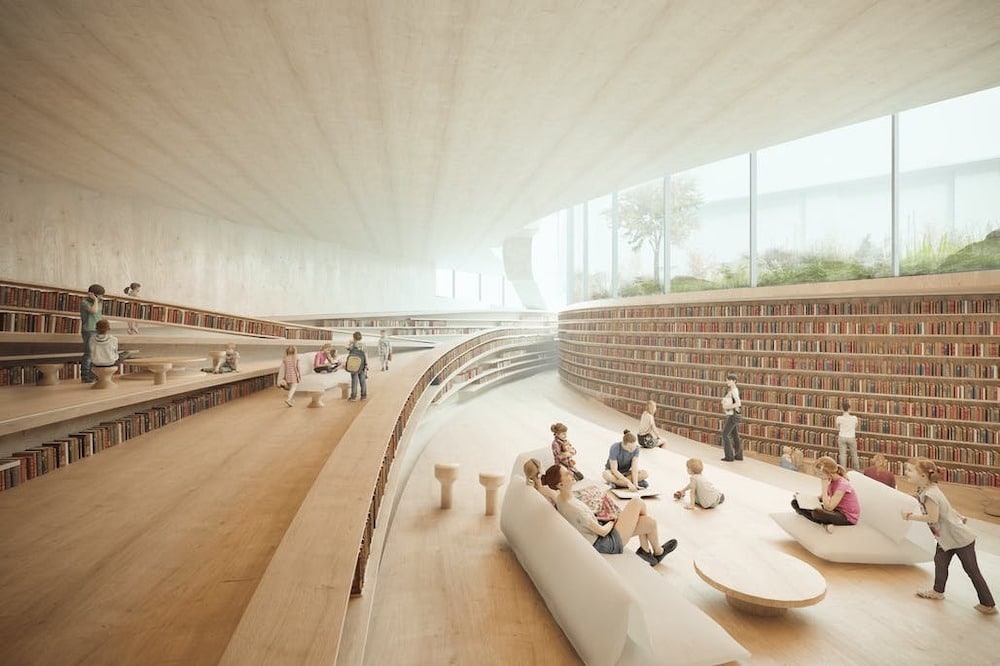
National Library of Israel by Herzog & de Meuron
Above, a space containing carved stone binds the project together and reflects the massive quality of Jerusalem’s historical architecture, while adding thermal mass to insulate the interior spaces. Thermal mass and shade, combined with solar panels on the roof and a rock store in the ground (for naturally cool air) ensure that the building is sustainable.
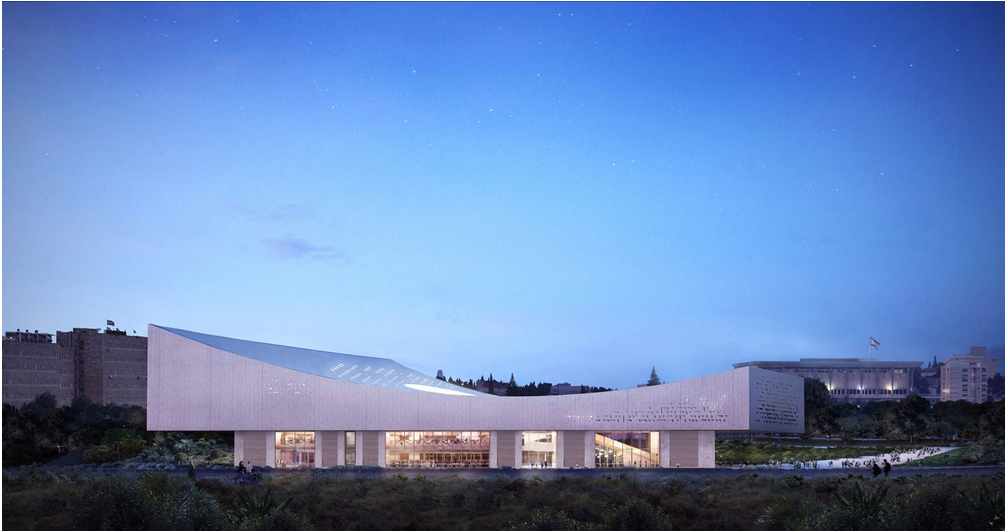
National Library of Israel by Herzog & de Meuron
Outside, the building is a curved, elevated and cantilevered volume made out of Jerusalem limestone found throughout the rest of the city. Designed to minimize solar heat gain on the windows behind, openings and carvings in the façadeare derived from a projection of erosions on ancient stone walls. The pattern is reminiscent of culturally specific imagery and text but remains abstract in origin.
The library is currently under construction, with completion scheduled for 2021.